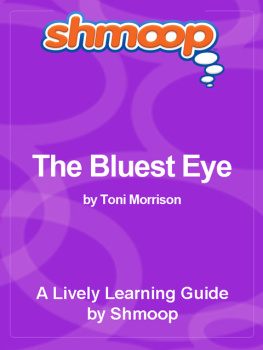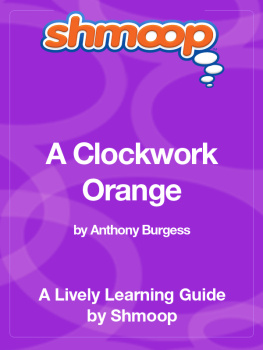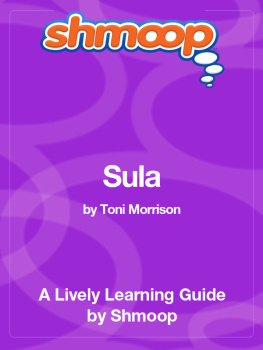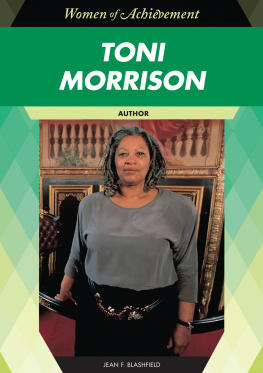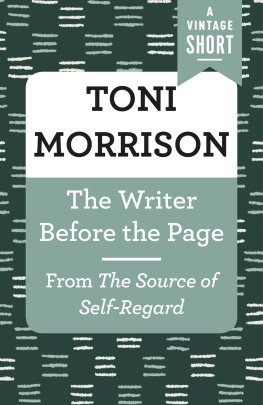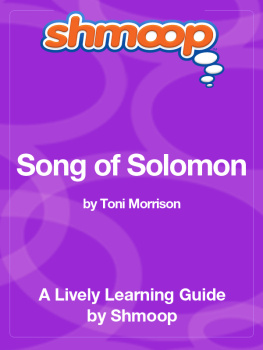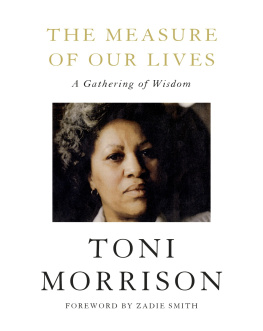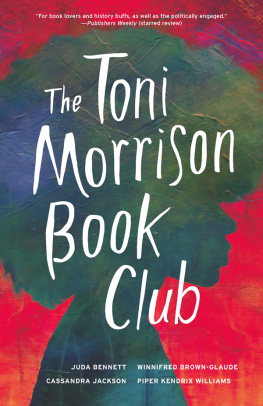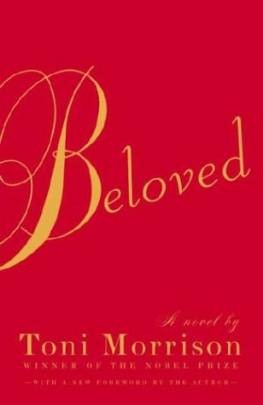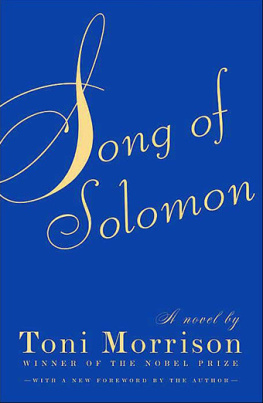Shmoop. - The Bluest Eye by Toni Morrison
Here you can read online Shmoop. - The Bluest Eye by Toni Morrison full text of the book (entire story) in english for free. Download pdf and epub, get meaning, cover and reviews about this ebook. City: Sunnyvale;Calif, year: 2010, publisher: Shmoop University, genre: Non-fiction. Description of the work, (preface) as well as reviews are available. Best literature library LitArk.com created for fans of good reading and offers a wide selection of genres:
Romance novel
Science fiction
Adventure
Detective
Science
History
Home and family
Prose
Art
Politics
Computer
Non-fiction
Religion
Business
Children
Humor
Choose a favorite category and find really read worthwhile books. Enjoy immersion in the world of imagination, feel the emotions of the characters or learn something new for yourself, make an fascinating discovery.
- Book:The Bluest Eye by Toni Morrison
- Author:
- Publisher:Shmoop University
- Genre:
- Year:2010
- City:Sunnyvale;Calif
- Rating:3 / 5
- Favourites:Add to favourites
- Your mark:
- 60
- 1
- 2
- 3
- 4
- 5
The Bluest Eye by Toni Morrison: summary, description and annotation
We offer to read an annotation, description, summary or preface (depends on what the author of the book "The Bluest Eye by Toni Morrison" wrote himself). If you haven't found the necessary information about the book — write in the comments, we will try to find it.
The Bluest Eye by Toni Morrison — read online for free the complete book (whole text) full work
Below is the text of the book, divided by pages. System saving the place of the last page read, allows you to conveniently read the book "The Bluest Eye by Toni Morrison" online for free, without having to search again every time where you left off. Put a bookmark, and you can go to the page where you finished reading at any time.
Font size:
Interval:
Bookmark:

In the Afterword to The Bluest Eye, Toni Morrison writes that the novel came out of a childhood conversation she could never forget. She remembers a young black girl she knew who wanted blue eyes, and how, like Claudia MacTeer in the novel, this confession made her really angry. Surrounded by the Black Is Beautiful movement of late 1960s African-American culture, Morrison decided to write a novel about how internalized racism affects young black girls in a range of ways - some petty and minute, some tragic and overwhelming.
How cool would it be to read both books - or to read The Bluest Eye and watch Precious - and be able to say something brilliant like, "Following in the footsteps of Toni Morrison and Alice Walker, Sapphire's work explores the devastating effects of sexual violence on modern African-American women."
Well, maybe you wouldn't put it quite like that, but hopefully, after reading The Bluest Eye, you can see how Toni Morrison helped create a space where black women writers could talk about the horrible effects that racism, poverty, and substance abuse can have not only on the adults who experience them but on their children as well.
The Bluest Eye forces us as readers to confront our own ideas of what counts as beautiful. When we read the novel, do we identify with Pecola's desire to conform to the standards that contemporary celebrity culture tells us are beautiful?
Do we secretly or not-so-secretly want to change our bodies and our facial features to look more attractive? Or do we, like Claudia, recoil from this idea and identify with the underdogs, oddballs, and people who look unique?
Do we try to change ourselves in order to fit what other people find beautiful, like Pauline? Or, do we scoff at beauty rules and laugh it up, like Miss Marie? The novel offers several different ways of interacting with beauty norms, and it's endlessly interesting to see where we find ourselves within these schemes.
Let's deal with the easy one first. As a black child growing up in1940s America, Pecola associates beauty with being white and having blue eyes, like child icon Shirley Temple. Pecola seems to be OK with her nose and mouth, even her hair - but her eyes, oh, her eyes! She thinks that if she could just have those bright blue eyes, she'd become truly beautiful and no one would ever tease her at school, her parents wouldn't fight anymore, and she'd never be sad again.
Now, onto the second aspect of the title - Pecola's desire to see the world differently. Pecola believes that if her eyes were blue, she would begin to see the world the way that white children do - she would get to be innocent, she would experience a loving family.
A third idea plays with the meaning of "blue" as "sad." Pecola's eyes already are the bluest in the book, in that they are the saddest eyes, possessed by the most tragic character in the novel.
First, this chapter highlights the fact that Pecola's obsession with beauty has evolved throughout the novel. By the end, "blue eyes" are no longer simply code for Shirley Temple or white beauty; rather, they are how Pecola makes sense of the rape she has endured.
Pecola convinces herself that the reason no one talks to her and the reason her own mother can't make eye contact with her is because everyone is jealous of her eyes. It's just too hard, and Pecola is too darn young, to admit that the real reason she is being ignored is because she was raped by her father and delivered his child.
When you think about it, this is actually a realistic portrayal of the way children (and hey, some adults too) deal with cruelty and teasing. In this chapter, it's as if Pecola is shouting, "You're just jealous!"
We also see the consequences of relying on physical beauty to make up for psychological and social problems. If beauty is being used to cover up ugliness, and the world keeps doing ugly things to you, then beauty can never be enough to fight that. Even though Pecola has, in her delusional mind, received blue eyes, she now wonders obsessively, "what if there's someone with bluer eyes?" There will always be someone out there more beautiful than you, and Pecola seems to be an example of how crazy you can get if you don't face this fact.
Finally, the ending reminds us that Pecola's "madness," if we want to call it that (do we?) is not her fault but is embedded in her community. The chapter begins with a quote from the initial Dick and Jane grammar school primer that is the book's epigraph, at the point in the story where a "friend" comes to play with Jane. The epigraph says, "THEYWILLPLAYAGOODGAME." It's painfully ironic that this excerpt foregrounds the theme of friendship. Pecola doesn't have any real friends, only this voice inside her head.
Now, calling this second voice an "imaginary friend" is maybe a bit too easy. It might be more interesting to see the second voice as the part of Pecola that still wants to live. After all, this is an affirming voice, an encouraging voice, one that wants her to go outside and to help her address the aftermath of the rape.
Perhaps the true tragedy of the novel is that in ignoring her completely, Pecola's community forces her into such devastating loneliness that she has to imagine someone talking to her. The community commits a crime on a par with Cholly's abuse: if Cholly failed her by raping her, Pecola's community failed her by never acknowledging that a rape took place.
Font size:
Interval:
Bookmark:
Similar books «The Bluest Eye by Toni Morrison»
Look at similar books to The Bluest Eye by Toni Morrison. We have selected literature similar in name and meaning in the hope of providing readers with more options to find new, interesting, not yet read works.
Discussion, reviews of the book The Bluest Eye by Toni Morrison and just readers' own opinions. Leave your comments, write what you think about the work, its meaning or the main characters. Specify what exactly you liked and what you didn't like, and why you think so.

